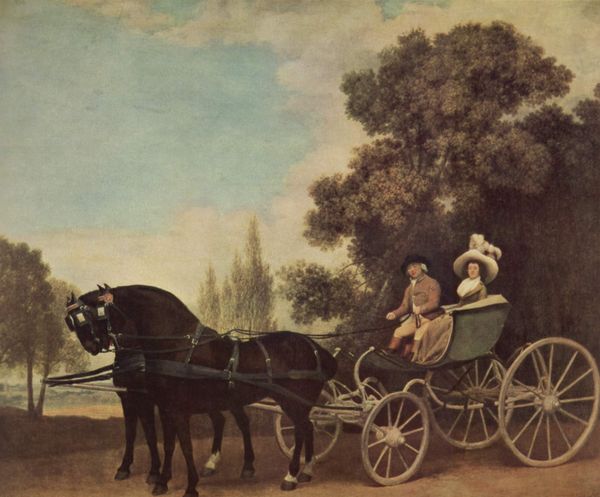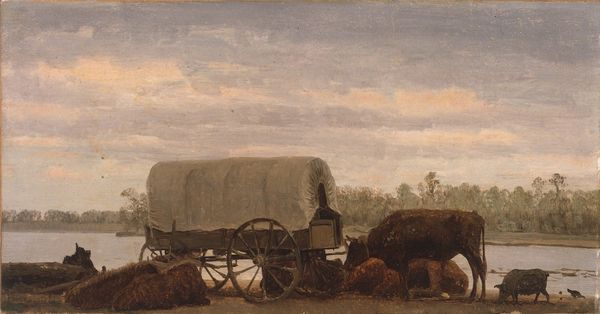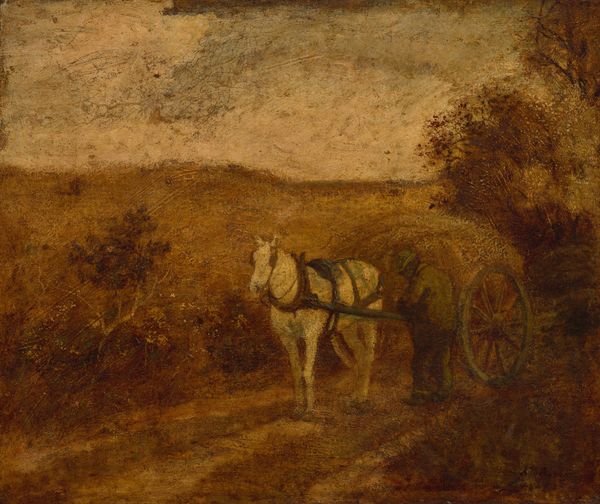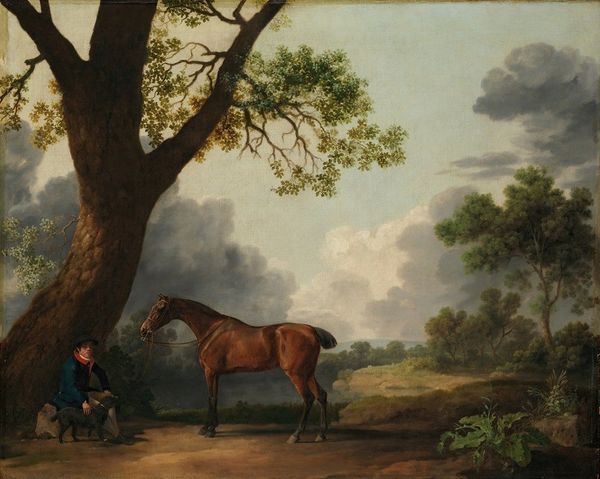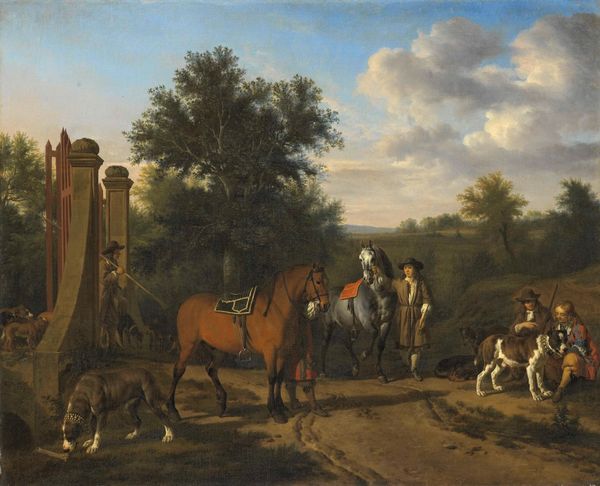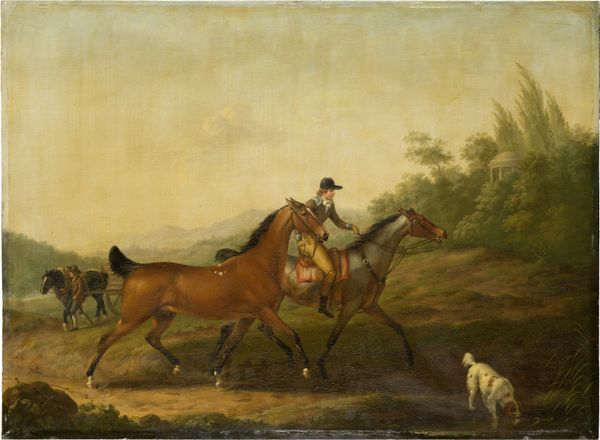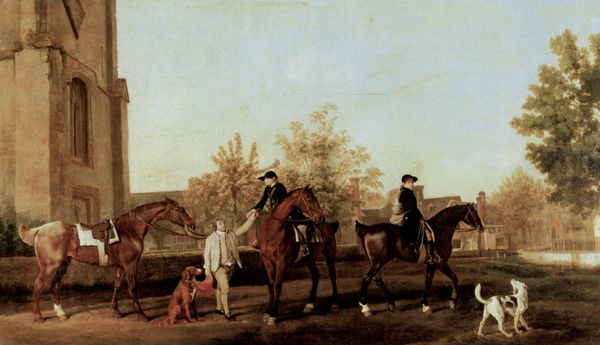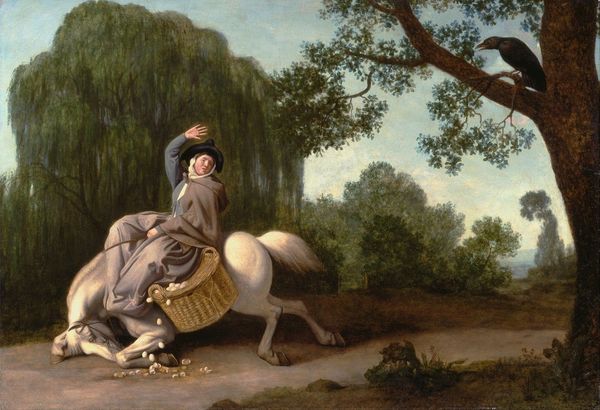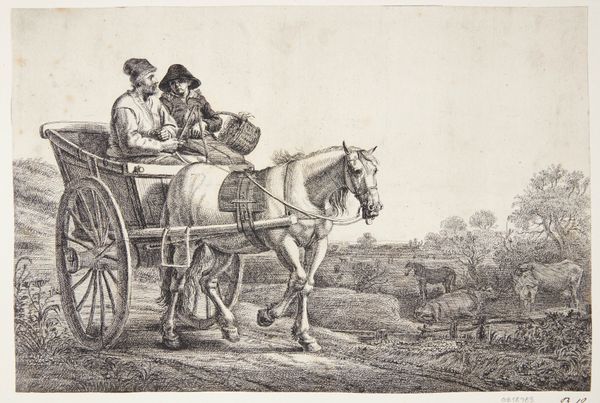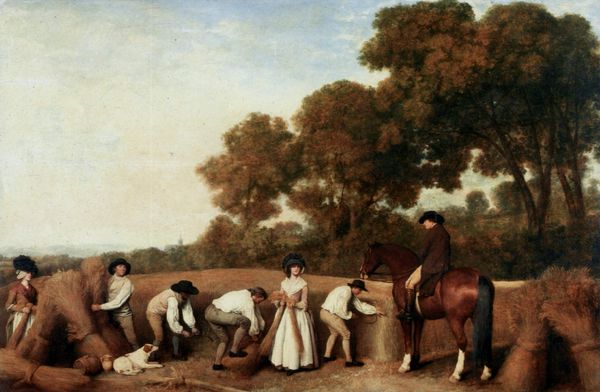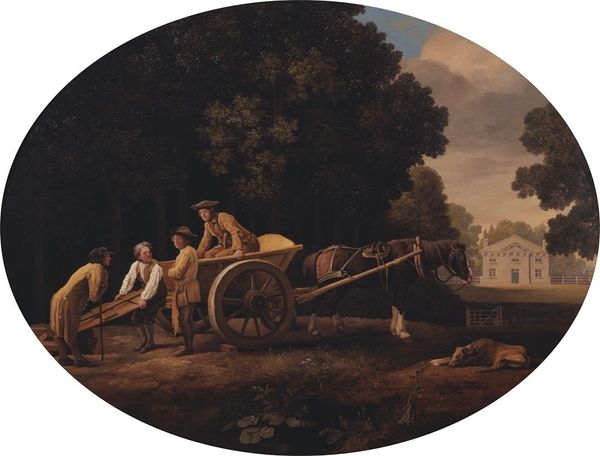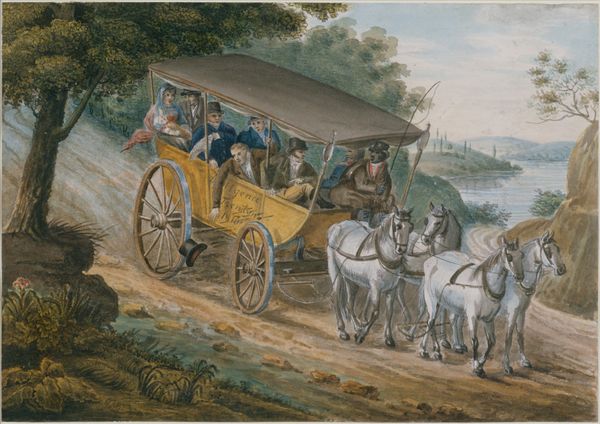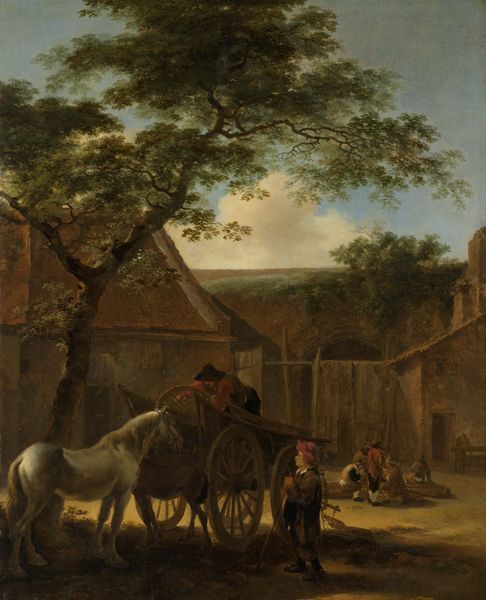
Copyright: Public Domain: Artvee
Editor: So, this is George Stubbs’s "Phaeton with a pair of cream ponies and a stable-lad," painted sometime between 1780 and 1784. It’s an oil painting. It has such a calm and pastoral mood to it, like a fleeting moment captured in time. How do you interpret this work, considering the period it was made? Curator: It’s a fascinating piece when viewed through a historical lens. Stubbs wasn't merely painting horses; he was capturing the burgeoning power of the landed gentry and their relationship to the landscape. Consider the social context: The late 18th century saw increased enclosure of common lands, concentrating wealth and shaping new social hierarchies. Do you see any visual cues that suggest this socio-political landscape? Editor: Well, the immaculate carriage, the well-groomed ponies, and even the stable-lad's attire—they all seem to emphasize a certain level of wealth and status, and access to expansive property and leisure. Curator: Precisely! Stubbs often depicted animals for wealthy patrons. This isn’t just a portrait of horses; it’s a display of ownership and control. The landscape itself is domesticated, tamed, serving as a backdrop to underscore the family’s elevated position. Note how even the inclusion of the seemingly “natural” landscape functions within the constructed image of landed wealth. Editor: That's a great point. I hadn’t considered the role the landscape plays in emphasizing social power dynamics. Curator: It raises interesting questions about the public role of art, doesn't it? Stubbs was creating aspirational imagery, reinforcing social structures and the politics of imagery for those with access to his works and wider distribution through prints. Editor: So, he’s documenting, but also contributing to, the construction of these class distinctions? Curator: Exactly. Art doesn't just reflect society, it actively participates in shaping it. Understanding the historical forces at play helps us decipher the messages embedded within these seemingly straightforward portraits. Editor: That’s definitely changed how I see the painting! Curator: It’s all about uncovering the layers of meaning beneath the surface, to contextualize this work and to find an art object's complex cultural roles.
Comments
No comments
Be the first to comment and join the conversation on the ultimate creative platform.
